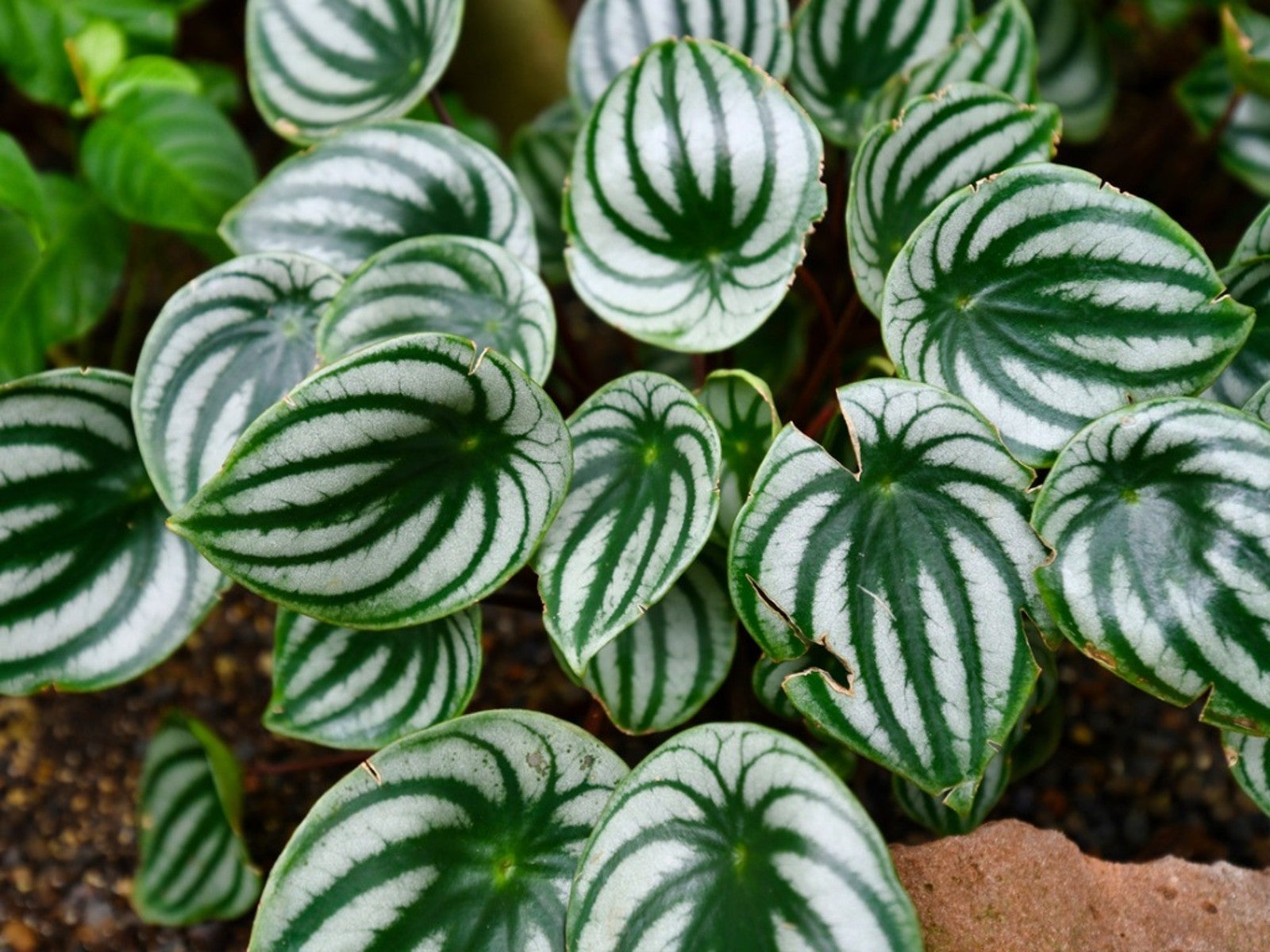Common Peperomia Pests And Diseases


Peperomia is a popular houseplant for its interesting foliage and low-maintenance needs. Grown indoors, pests and diseases aren’t major problems, but they can occur and ruin a beautiful plant. Know the most common peperomia diseases and pests and how to manage them.
Root Rot
Excessive moisture in the soil can easily cause a fungal infection known as root rot. Look for rot at the soil line that eventually works its way up the stem. If you look at the roots, they will be black and soft.
The best way to avoid root rot is to prevent it. Use new soil when potting a plant. Make sure it drains well and avoid overwatering.
Leaf Spots
Leaf spots are fungal infections. There are different fungi species that cause similar but unique infections:
- Cercospora. This infection produces raised, tan, brown, or black spots on the undersides of leaves. The spots are irregularly shaped and appear swollen.
- Phyllosticta. You might see this infection on your watermelon peperomia. The spots are dark brown or back and appear dry. The spots start on the edges of the leaves and spread inward.
- Rhizoctonia. Rhizoctonia fungus creates leaf spots that are mushy and dark brown or black. The spots are elliptical or irregular and often have concentric rings.
You might be able to treat fungal leaf spots with a fungicide or by removing affected leaves if the infection has not spread very far. Give your plants plenty of space for air flow and trim back unhealthy leaves to open them up more.
Ring Spot
On peperomia, brown spots could indicate ring spot, a viral disease. Look for concentric translucent to brown rings as the major sign. Younger leaves might also curl or twist. Severe disease will stunt the plant’s growth. Peperomia leaves falling off is another sign of advanced ring spot.
Ring spot is usually spread by cuttings taken from plants that seem healthy but harbor the disease. Unfortunately, there is no treatment, so you’ll have to dispose of any plants with ring spot.
Sign up for the Gardening Know How newsletter today and receive a free copy of our e-book "How to Grow Delicious Tomatoes".
Mites
A typical pest of peperomia is the tiny mite. You probably won’t see it until it has caused significant damage. Young peperomia leaves curling can be an early sign. They also become brittle and twisted. Leaves of peperomia turning yellow can be a sign of mites too. Try an insecticidal soap if you see signs of mites on your plants.
Fungus Gnats
These flies are very small but visible. They don’t fly very well and might appear to be jumping around a plant. Look for them on leaves and on the surface of the soil in the pot. Also look for webs on the soil surface, which the larvae create.
Fungus gnat larvae thrive in the same moist conditions as fungal infections. The damage they cause to leaves can make a plant more susceptible to infection. The larvae feed on roots and any leaves touching the soil.
To avoid fungus gnats, minimize watering and don’t let the soil stay soaked or soggy. Provide good air flow between plants and leaves.
Mealybugs
Another common pest on peperomia are mealybugs. They are white and cottony in appearance and hang out on leaf axils, underneath leaves, and on roots. You might also see sooty mold and honeydew on infested plants. With a bad infestation, the plant will be stunted and might die. Use an appropriate soil pesticide to manage mealybugs.
In spite of all the pests and diseases that might affect your peperomia, these are largely easy plants to grow and maintain. One of the most important things you can do for a healthy peperomia is to start with a healthy plant from a reputable seller. If your plant shows signs of disease or infestation, return it to the store where you bought it. If taking cuttings from friends, be sure the plants are healthy.

Mary Ellen Ellis has been gardening for over 20 years. With degrees in Chemistry and Biology, Mary Ellen's specialties are flowers, native plants, and herbs.